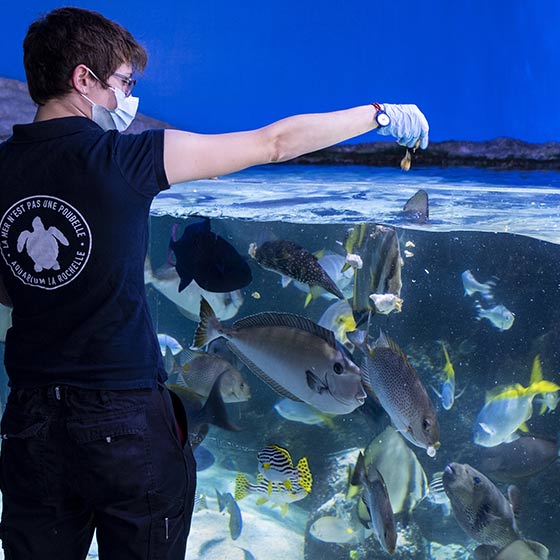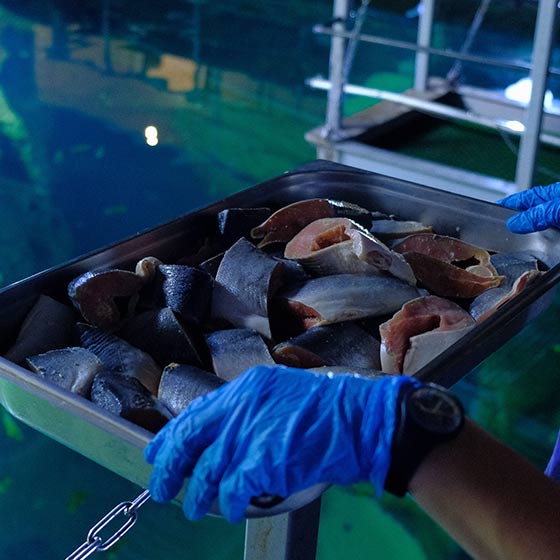The different types of distribution
At the Aquarium La Rochelle, four types of distribution are used. They vary according to the species and its way of life.
For pelagic species, i.e. those that swim in open water, food can be distributed on the fly. This method is used for most aquariums.
Other species are benthic, such as rays, dogfish or mullet. They live at the bottom of the aquarium. Biologists therefore use a wide pipe, reaching to the bottom of the tanks, to deliver food to them.
Plankton-eating species need to eat continuously. This is the case for filter-feeding organisms such as bivalves and sponges, but also for sessile species that cannot move (corals, barnacles, etc.). To meet this need, distribution pumps connected to the tanks supply phytoplankton and zooplankton on a regular basis.
Finally, some specimens are fed individually and using claws. This method makes it possible to stimulate animals such as octopus. Feeding is then approached in the form of a game. For bull sharks, it allows the distribution of more substantial food, since they feed on whole fish (conger eel, salmon, etc.).


